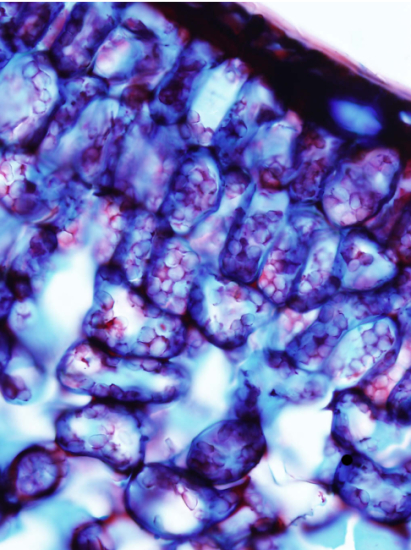Plant tissues. Parenchyma.
PHOTOSYNTHETIC

Species: camellia (Camelia japonica).
Technique: vibratome thick section, safranin / alcian blue staining.
Leaf photosynthetic parenchyma is known as mesophyll. Mesophyll parenchyma cells contain many chloroplasts and are usually arranged in two ways: palisade and spongy. 1) The so-called palisade parenchyma is located close to the upper epidermis of the leaf. It contains elongated cells arranged in layers with small intercellular spaces. The number of cell layers is usually related to the light intensity, with differences between the leaves exposed to direct sunlight, Sun leaves, and leaves located in the shade, shadow leaves. Sun leaves are smaller in surface and thicker than shadow leaves. The thickness is due to a greater development of palisade parenchyma. 2) Spongy parenchyma is found close to the lower epidermis. It is made of more rounded cells, not arranged in layers, and with conspicuous intercellular spaces. It suitable for gas interchange between the leaf and the atmosphere, further helped by the stomata, which are mainly distributed in the lower epidermis of the leaf.
